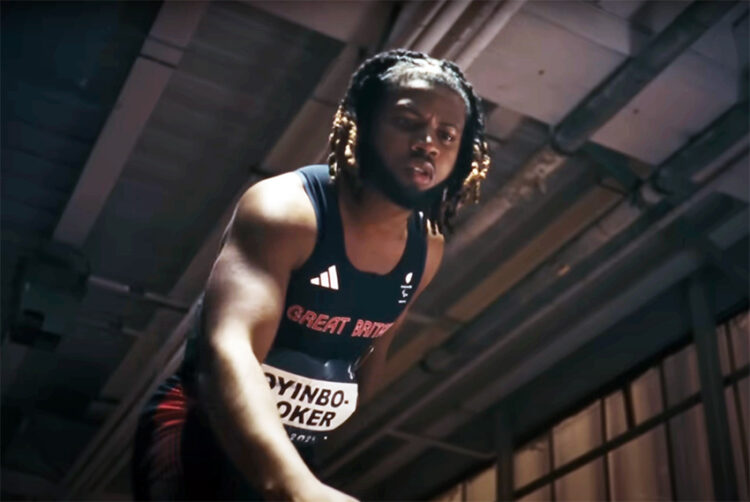The Year Ahead 2025: Make inclusion your New Year’s resolution

Opinion
Inclusion within a company’s internal culture directly shapes its output. When agencies and brands prioritise DEI internally, it translates into authentic and representative campaigns.
In recent years, marketers have made real strides on prioritising inclusivity. We can see the benefits this has from a business perspective — data from Deloitte shows that having an inclusive and diverse workforce enhances creativity and innovation by 20%, and inclusive decision making leads to better business decisions 87% of the time. Diverse management teams have also been found to improve revenue as much as 19%.
However, there are signs that this momentum is slowing, with fewer marketers prioritising inclusion as a top focus. Just three years ago, 22% of marketing leaders said their top priority was DEI, but that number has dropped to 18%, according to MediaLink’s 2024 The Marketer’s Forecast report.
Businesses including Amazon and Meta have also cut their DEI budgets at the start of 2025.
This shift risks undermining one of the greatest opportunities for growth at a time when marketers need it most.
Internal culture matters
Reduction in DEI commitments unfortunately becomes evident during industry-wide downturns. I can’t help but feel a little disheartened when I see news like this; but equally I can’t act surprised when I see how this results in the lack of diversity and representation we see in the media we consume.
Inclusion within a company’s internal culture directly shapes its external output. When agencies and brands prioritise DEI internally — by fostering diverse teams, accessible processes and inclusive decision-making — it naturally translates into authentic, representative and resonant campaigns.
Conversely, a lack of internal commitment often results in superficial or tokenistic efforts that fail to connect with audiences meaningfully — or no engagement in inclusivity whatsoever.
This short-sighted approach overlooks the critical importance of inclusion, both as a moral imperative and a business opportunity.
Inclusion without exaggeration: How to make disabled people part of the conversation
Lack of meaningful representation
Disability representation in UK advertising has been a persistent issue.
Research by Channel 4 revealed that just 4% of TV ads in 2022 included a disabled person. This is despite the fact that 16m people in the UK live with a disability — approximately 24% of the working population.
When we look at other countries, or assess digital advertising beyond ads, the numbers shrink even more. But globally, one in five people are disabled.
When there is a lack of meaningful representation, it not only perpetuates harmful stereotypes but also alienates a significant consumer base. It’s a missed opportunity for brands to connect authentically with a diverse audience.
In the case of last year’s Christmas ads, it should be a particularly frustrating point for brands, as they missed out on connecting with even more audiences during the most commercially significant season.
Channel 4, Bupa and Purple Goat call for accessibility legacy post-Paralympics
Not a trend but a necessity
Advertising doesn’t just reflect society; it shapes it. The stories we tell influence public perception and, by extension, societal norms.
Last year, we worked with Channel 4 on its “Considering What?” Paralympics campaign. By collaborating closely with disabled talent from the outset and ensuring their voices informed the creative process, the campaign avoided clichés and delivered powerful storytelling that connected with audiences and progressed the conversation around disability in society.
When disabled people are consistently excluded or relegated to the background, it normalises exclusion across other systems, from employment to education to healthcare.
Conversely, inclusive representation can drive significant social change. Consider the strides made in LGBTQIA+ representation over the past decade. Intentional, authentic storytelling in advertising has contributed to a shift in public attitudes and even legislative change.
Representation has the potential to make similar progress within disability inclusion — but only if we commit to doing the work.
Channel 4 creates ‘most accessible’ sponsorship idents yet for Paralympics 2024
The hidden cost of budget cuts
The decision to cut DEI budgets may seem pragmatic in the short term, but it’s a false economy. The business case for inclusion is undeniable.
Families of disabled people in the UK are estimated to spend £274bn a year. On a global scale, this amount goes up to over £13tn.
Nielsen’s research shows that 66% of consumers are willing to pay more for products from companies committed to positive social impact. And Kantar’s global study more recently found that 75% of consumers believe a brand’s reputation for diversity and inclusion — or lack thereof — influences their purchase decisions.
Moreover, data consistently shows that brands that sustain marketing investments during downturns recover faster and perform better in the long term compared with those that cut back.
Marketers cut spend in main media as cautious approach continues
Driving future value
I’d implore our industry, as we kick off the new year, to recognise that DEI is not optional; it’s a strategic imperative.
Cutting budgets might save money in the short term, but the long-term costs — alienated audiences, missed opportunities and diminished cultural relevance — are far greater.
Inclusion isn’t just about doing what’s right; it’s about doing what is going to drive value in the future. The systems we create today will define the campaigns we produce tomorrow. Let’s ensure those campaigns include everyone.
 Martyn Sibley is co-founder and CEO of Purple Goat
Martyn Sibley is co-founder and CEO of Purple Goat




